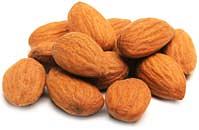Book: Anti-Aging relies on Traditional Foods
I've been reading a stack of nutrition and health books lately, and while I think some outdo this one, I have to say Deep Nutrition has been the most enjoyable. The Shanahans are great writers and I found myself just eating this one up (pardon the pun). The book has what I see as two main lines of force: epigenetics and traditional foods. Simply put, our genes are designed for certain foods, and when the signals from those foods are either absent or corrupted, or genes do some funky things. Our bodies just weren't designed for the pale substitutes we call 'food' - squeezed of all nutrition, chemically reconstituted, and packaged with a goodly portion of sugar and vegetable oils to make a finished product that will outlast the cockroaches (with less nutrition than one, to boot).
The sections on sugar and vegetable oils are very clear and make me wonder how anyone can knowingly and willingly ingest these substances. In that sense, this book does a great service to those who are becoming more conscious of what and how they eat. We aren't plagued with the "diseases of civilization" for no reason, after all... and the Shanahans show why this is the case. And the sections on beauty and facial symmetry were both fascinating and fun to read (I like how celebrity culture becomes a tool of teaching here!).
I do have a few reservations about the book, however. The Shanahans, while promoting traditional foods (on the bone, organ meats, fermented, and fresh) they seem unaware of a lot of the latest research on the problems with gluten (which affect enough of the population for me to think no one should be eating it) and plant foods in general (see Gedgaudas). And while they do mention some of the benefits of a low-carb diet, I think their presentation would've been a lot better with the insights to be gleaned from authors like Allan and Lutz (Life Without Bread: How a Low-Carbohydrate Diet Can Save Your Life) and Phinney and Volek (The Art and Science of Low Carbohydrate Living: An Expert Guide to Making the Life-Saving Benefits of Carbohydrate Restriction Sustainable and Enjoyable). But if they're all read together, I think these four books make a great set on what to eat and what not, and WHY. It certainly makes sense what they write, and to use another gastronomical pun, offers much food for thought.
Comments
There are 1 comments on this post
- Date: 12 January 2012
- Posted By :













